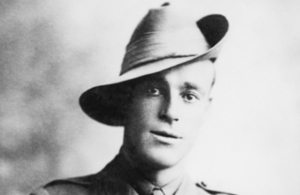WW1 Australian VC recipient Reginald Roy Inwood
The story of Australian First World War Victoria Cross recipient Reginald Roy Inwood.

Reginald Roy Inwood [Credit: Australian War Memorial H06193]
66 men from Australia received the Victoria Cross, Britain’s highest award for gallantry, during the First World War. As part of the Centenary Commemorations the people of the United Kingdom marked their gratitude to those courageous men by presenting a bronze memorial plaque to their home country engraved with their names. The plaque is now displayed at the Australian War Memorial. This archive tells their stories
Name: Reginald Roy Inwood (known as Roy)
DOB: 14 July 1890
Place of Birth: North Adelaide, Australia
Date of Action: 20 to 21 September 1917
Place of Action: Polygon Wood, near Ypres, Belgium
Rank: Corporal
Regiment: 10th Infantry Battalion, Australian Imperial Force
Reginald Inwood (known by his second name of Roy) was born on 14 July 1890 in North Adelaide, Australia. He worked in a local mine before enlisting as a private in the 10th Battalion of the Australian Imperial Force in August 1914. Inwood took part in the Gallipoli landings before being sent to the Western Front.
Private Inwood was awarded his Victoria Cross for his actions on 20 to 21 September 1917 at the Battle for the Menin Road, Polygon Wood, near Ypres, Belgium, when he was credited with single-handedly wiping out an enemy machine-gun position. His citation explains the events:
For most conspicuous bravery and devotion to duty during the advance to the second objective. He moved forward through our barrage alone to an enemy strong post and captured it, together with nine prisoners, killing several of the enemy. During the evening he volunteered for a special all night patrol, which went out 600 yards in front of our line, and there - by his coolness and sound judgment - obtained and sent back very valuable information as to the enemy’s movements. In the early morning of the 21 September, Private Inwood located a machine gun which was causing several casualties. He went out alone and bombed the gun and team, killing all but one, whom he brought in as a prisoner with the gun.
In 1918, Inwood returned to Australia to help with recruitment. He later served during the Second World War. He died in Adelaide in 1971 and was accorded a full military funeral.